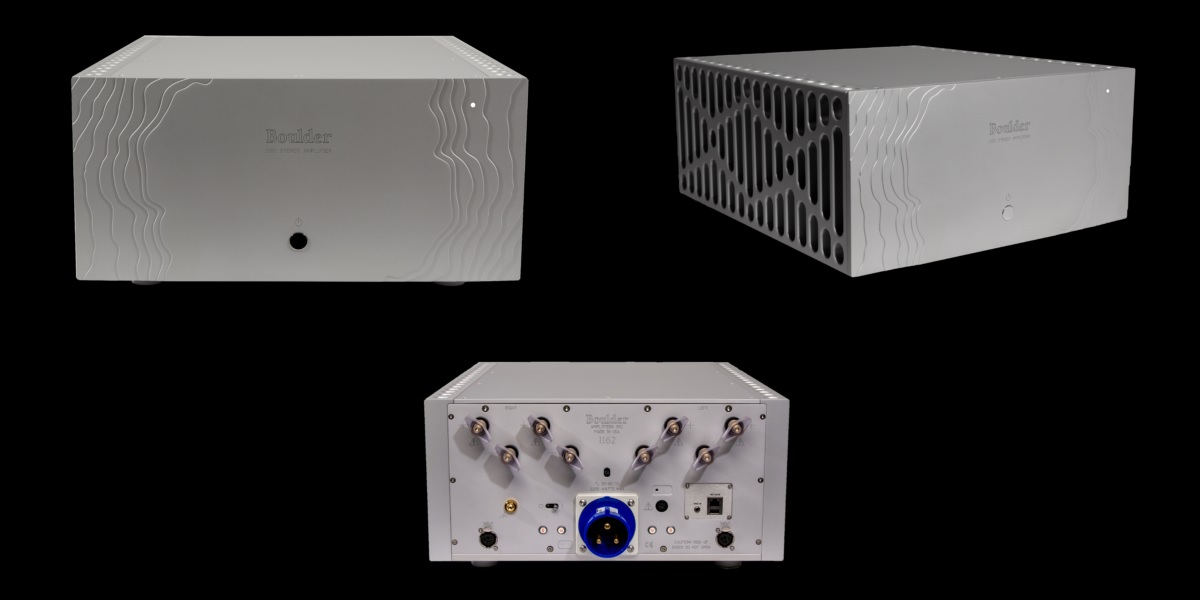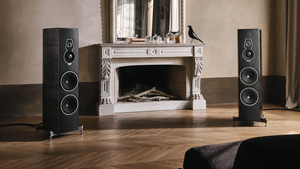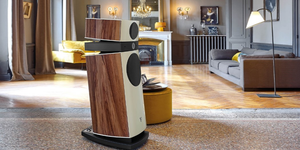
Boulder 1162 Stereo Power Amplifier Review
I. Introduction: A Mountain Mover Evolves
In the rarefied air of high-end audio, few names command the same level of reverence as Boulder Amplifiers. For four decades, the Colorado-based manufacturer has carved a legacy from solid aluminum, building an unimpeachable reputation on a foundation of engineering purity and an unwavering commitment to a single guiding principle: maximize performance. Boulder is an anomaly in modern manufacturing, the last audio company in North America to maintain absolute in-house control over every facet of production, from the initial metalwork to the final circuit board assembly. This obsessive vertical integration has resulted in components renowned for their rugged reliability, transparent accuracy, and an almost complete absence of their own sonic signature.

Into this storied history steps the 1162 Stereo Power Amplifier. On the surface, it is the designated successor to the universally acclaimed and multi-award-winning 1160, a key pillar of the esteemed 1100 series. However, to view the 1162 as a mere incremental update would be to miss the tectonic shift occurring within its chassis. The primary revision is the incorporation of a revolutionary Class-A biasing scheme featuring Boulder’s proprietary Smart Current Technology, an innovation first seen in the company's new 1151 monoblocks. This is not a minor tweak; it is a fundamental re-engineering of the amplifier's core, so extensive that Boulder has stated that internally, this is a "brand new amplifier".

This raises a fascinating and pivotal question. The predecessor 1160 was the epitome of technical mastery—a titan of control, detail, and power, yet sometimes described as "not warm, fuzzy, or forgiving". In contrast, early impressions of the new Smart Current-equipped 1151 monoblocks have introduced a new vocabulary to the Boulder lexicon, with descriptors like "beautiful," "warm, radiant, glowing". This sets the stage for a compelling narrative. The 1162 represents a deliberate evolution in the company's house sound, a conscious effort to move beyond pure objective accuracy toward a more holistic and emotionally resonant vision of music reproduction. Has Boulder, the master of analytical perfection, managed to teach its titan to sing?

II. First Impressions: Form Follows Function, With a View
The arrival of the Boulder 1162 is an event. At 135 lbs (61.2 kg) unboxed, it is a heavyweight in every sense of the word, a dense, immoveable object that immediately communicates seriousness of purpose. This substantial mass echoes that of its predecessor, the 1160, a component often affectionately referred to as "a bit of a beast". The amplifier’s physical form is a direct expression of its internal philosophy, a classic case of "form follows function" where every design choice serves a specific engineering goal.
The most striking visual element is the intricately machined front panel, which artfully depicts a topographical map of Flagstaff Mountain, a landmark near the company's Colorado home. This is more than mere ornamentation; it is a profound statement of identity, grounding the state-of-the-art technology within a sense of place and heritage. The rest of the casework is clean, modern, and impeccably finished, exuding a quiet confidence that eschews flashy adornments for purposeful design.
Installing the 1162 is a ritual that underscores its uncompromising nature. The amplifier’s immense power demands are met not with a standard power inlet, but with a robust 32 Amp IEC connector and a supplied pre-terminated cord, a necessary measure to safely handle its potential 3000W maximum power consumption. Connectivity is equally purposeful. Inputs are exclusively balanced 3-pin XLR, a deliberate choice that complements Boulder’s fully differentially balanced circuitry from input to output to ensure maximum noise rejection and signal integrity. At the rear, four pairs of substantial 0.25-inch (6 mm) high-current binding posts stand ready to accommodate bi-wired loudspeakers with ease. These terminals, like those on the 1160, are designed for spade lugs, a connection Boulder believes ensures superior long-term reliability compared to banana plugs.
These demanding physical and electrical requirements are not conveniences; they are engineering mandates. The 1162 does not simply slot into a system; the system must, in many ways, be adapted to it. This dynamic creates a psychological "buy-in" for the owner, inverting the typical consumer-product relationship. It forces a commitment to the amplifier's no-compromise philosophy, reinforcing its status not as a luxury appliance, but as the uncompromising, professional-grade heart of a serious audio system.

III. The Heart of the Matter: Deconstructing Smart Current
Beneath the sculpted aluminum lies an architecture that represents a significant leap forward in amplifier design. The centerpiece of this evolution is Boulder's proprietary Smart Current technology, a novel approach to Class-A biasing that seeks to deliver the sonic purity of traditional Class-A operation without its notorious drawbacks of inefficiency and extreme heat.
Unlike a conventional Class-A amplifier, which runs its output transistors at full current at all times, the 1162’s Smart Current circuit continuously monitors the actual current being drawn by the loudspeaker. Using sophisticated analog circuitry, it then adjusts the bias in real-time to meet the precise demands of the musical signal. This intelligent, dynamic biasing keeps the output stage operating in a pure Class-A state during musical passages but allows it to run coolly and efficiently when idle. The result, according to Boulder, is the virtual elimination of the crossover distortion inherent in Class-AB designs, with the company claiming the effect is "so reduced to near zero as to be totally inaudible". This advancement, born from over a year of dedicated research and development, is what sonically separates the 1162 from its predecessors.
This innovative output stage is supported by a power supply of immense capability. Dual power transformers are DC filtered and fully enclosed within a welded steel case, a design that ensures "perfectly silent operation" by preventing mechanical hum or vibration from contaminating the audio signal. Power is stored not in a few large capacitors, but in an array of multiple smaller, faster filter capacitors, a choice made to improve the delivery of instantaneous current for superior dynamic impact.
This formidable hardware is governed by a suite of intelligent control systems. Newly developed protection circuitry constantly monitors operating conditions and can safely and immediately shut down the output section in the event of a short circuit or system fault. This not only safeguards the amplifier but also allows for greater peak power output under demanding conditions. An updated, Ethernet-enabled supervisor circuit monitors all internal systems, enhancing long-term reliability and allowing for IP and HTML control for seamless integration into networked systems and smart homes. For those invested in the Boulder ecosystem, Boulder Net control access provides a communication link to other Boulder products, creating a cohesive and intelligently managed system.

Technical Specifications
| Specification | Value |
| Power Output | |
| Continuous Power, 8Ω | 300W |
| Peak Power, 8Ω | 450W |
| Peak Power, 4Ω | 900W |
| Peak Power, 2Ω | 1,000W |
| Distortion (THD, 300W) | |
| 8Ω | $0.002\%$ (midband), $0.01\%$ (20 kHz) |
| 4Ω | $0.002\%$ (midband), $0.01\%$ (20 kHz) |
| 2Ω | $0.003\%$ (midband), $0.02\%$ (20 kHz) |
| Signal Integrity | |
| Equivalent Input Noise (EIN), 20 kHz BW | $2.2 \mu V$ |
| Magnitude Response, 20 Hz to 20 kHz | $+0.00, -0.04$ dB |
| Magnitude Response, -3 dB | $0.015$ Hz, $150$ kHz |
| Voltage Gain | $26$ dB |
| Inputs & Outputs | |
| Input Impedance | $200k \Omega$ Balanced, $100k \Omega$ Unbalanced |
| Analog Inputs | Balanced 3-Pin XLR |
| Outputs | $0.25"$ (6mm) Binding Posts |
| Physical | |
| Weight (Amplifier) | 135 lbs (61.2 kg) |
| Weight (Shipping) | 215 lbs (97.5 kg) |
| Power | |
| Power Consumption | $3000$W (Max), $120$W (Idle), $10$W (Standby) |
IV. The Sonic Evaluation: Control Meets Radiance
The ultimate measure of any amplifier is its voice. The Boulder 1162 begins its performance by demonstrating the foundational strengths that define its lineage. The first word that comes to mind, as it did for reviewers of its predecessor, is "effortless". The 300 watts of continuous power, backed by peak reserves that surge to an astonishing 1,000 watts into a 2-ohm load, provide a sense of limitless headroom. The 1162 can drive any conceivable loudspeaker to any rational level with an unshakeable composure, never sounding strained or compressed.
This absolute authority is most apparent in the lower octaves. The bass is a study in control, retaining the speed, tightness, and powerful articulation for which the 1160 was lauded. Complex bass lines are rendered with stunning clarity, each note distinct and free of bloat or overhang. During a demonstration at an audio show, a system powered by the 1162 produced bass that was described as the kind "you feel pressing your chest," a testament to its visceral impact and control. This iron-fisted grip extends across the entire frequency spectrum, creating a vast and meticulously organized soundstage. As noted in the same show report, the 1162 helped craft a "tangible and fleshy" center image, with a soundfield that "extended beyond the front wall," echoing the broad, well-defined presentation of its forerunner.
Yet, this is where the 1162 departs from its ancestry and reveals its new, captivating soul. Layered upon this foundation of unflappable control is a newfound radiance, a quality directly attributable to the Smart Current output stage. Drawing from the sonic descriptions of the sibling 1151 monoblocks, the 1162’s presentation can only be described as "beautiful" and "gorgeous". There is an inner warmth and freshness to the sound, a vitality that transforms the listening experience from an analytical exercise into a deeply emotional one.
This transformation is most evident through the midrange and treble. Where the older Boulder sound was characterized by its stark neutrality, the 1162 presents instrumental and vocal textures with a palpable sense of body and harmonic richness. Pianos are rendered with a "radiant, glowing" quality, and voices are "marvelously illumined," floating free from a stunningly silent backdrop. This black background, a product of the heroic power supply shielding and meticulous grounding, allows the subtlest of micro-details and ambient cues to emerge with startling clarity, imbuing the music with a breathtaking sense of realism. The 1162 doesn't achieve its musicality by adding a euphonic coloration; rather, its near-perfect elimination of electronic artifacts allows it to reveal the natural warmth and texture inherent in the recording itself. It doesn't create beauty; it unveils it.
V. Context and Comparisons: Placing the 1162
To fully appreciate the achievement of the 1162, it must be placed in context, primarily against its decorated predecessor, the 1160. The 1160 was, and remains, a phenomenal amplifier—a benchmark for analytical precision, transparency, and power. It delivered the unvarnished truth of a recording with forensic accuracy. The 1162 retains every ounce of that control and resolution but adds a crucial new dimension: emotional insight. The shift is not merely from good to better, but from a technically perfect photograph to a living, breathing work of art. The 1160 showed you every detail with unflinching honesty; the 1162 does the same, but also reveals the warmth of the wood, the intent of the artist, and the soul of the performance. This is a true generational leap, an internal revolution so complete that an 1160 cannot be upgraded to an 1162.
In the broader market, the 1162 competes at an elite level against formidable offerings from manufacturers like Dan D'Agostino, Gryphon, and Soulution. While each brand has its own distinct sonic philosophy, the 1162 carves out a unique and compelling niche. It offers the absolute, vise-like speaker control and limitless dynamics characteristic of the most powerful solid-state designs, yet combines it with a liquidity, timbral richness, and inner glow that can rival the most seductive Class-A or even tube-based amplifiers. While other top-tier brands are often noted for a specific signature trait—be it the "cavernous black space" of CH Precision or the "lit up" soundstage of Ypsilon—Boulder's hallmark has always been its unparalleled "degree of control". The 1162 proudly carries this signature forward, but infuses it with a newfound radiance that is entirely its own.
VI. Final Thoughts and Recommendations
The Boulder 1162 is simultaneously the "culmination of 40 years of engineering prowess" and a "brand new amplifier" in the truest sense. It is a landmark product that achieves the rare synthesis of pushing the boundaries of objective, measurable performance while dramatically enhancing subjective musical engagement. It stands as definitive proof that the pursuit of technical perfection and the delivery of profound musical beauty are not mutually exclusive goals.
The central question was whether Boulder had managed to teach its titan to sing. The answer is an unequivocal and resounding yes. The innovative Smart Current technology has successfully bridged the gap between analytical precision and emotional connection, resulting in a sound that is at once breathtakingly real and deeply, movingly beautiful.
The 1162 is not for everyone. It is for the discerning, mature audiophile who has moved beyond chasing individual sonic traits like "bass slam" or "treble air" and instead seeks a holistic, coherent, and utterly convincing musical presentation. It is for the listener who demands the best of all worlds: the silent backgrounds, limitless dynamics, and absolute control of state-of-the-art solid-state amplification, combined with the harmonic complexity, timbral realism, and emotional expressiveness often sought from other technologies. The prospective owner must be willing to build their system around the amplifier's specific needs, understanding that its uncompromising design demands an equally uncompromising environment to deliver its full potential.
The Boulder 1162 is not merely a worthy successor to the 1160; it is a new benchmark for what is possible in high-power solid-state amplification. It is a statement piece that masterfully embodies the art of intelligent power, offering a profound and enduringly musical experience for those fortunate enough to hear it.






Comments